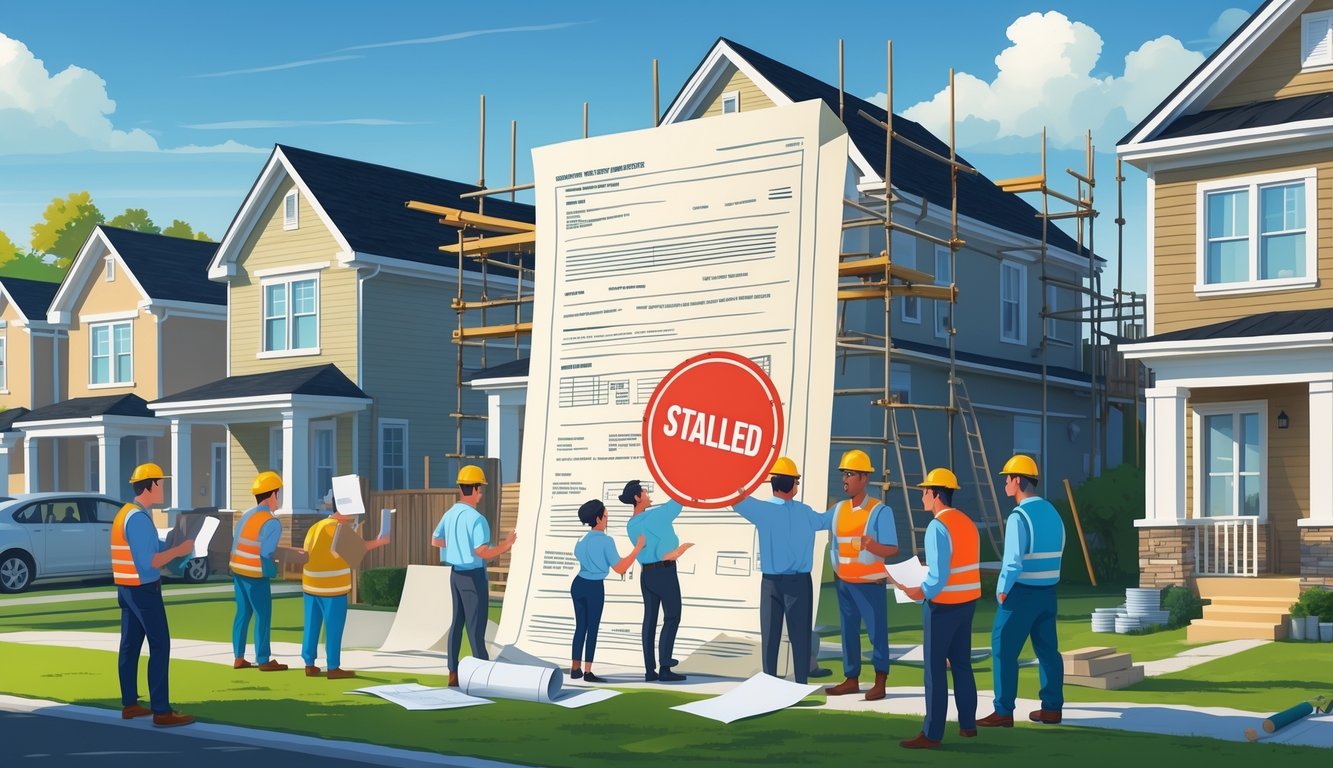
Contractors’ Revelations: Real Experiences

Picture this: I’m rifling through blueprints, inspector’s already in the driveway, and suddenly, panic. It’s never the big stuff. It’s always some tiny rule nobody mentions.
Hidden Rules Contractors Encounter
Some towns act like permits are classified info. I’ve stood there, mid-demo, only to find out you need a separate mechanical permit just to move a bathroom vent. “It’s in subsection 4B,” the building department says. Some places require an arborist’s note to remove your own tree before you get a permit, but the real estate agent never mentions it.
Insulation R-value? Changed last March, but the website’s out of date. I text another contractor—he just laughs and says, “Check the county newsletter.” No one reads it. Sometimes I wonder if the system’s set up just to trip us up. Retroactive permits? You can get one, but the fees are a punch in the gut, and no one warns you.
Project Setbacks and Solutions
Of course, the lumber for my last bump-out arrived the same day we hit a permit hold—missed an old gas line, inspector flagged it: “Work suspended pending utility clearance.” Three days on hold, five departments, finally hired a retired city planner to “expedite.” (Still not sure what he actually did.)
A homeowner I worked with got a big red “Work Without Permit” sticker on their door after a neighbor called about noise. The fix? Call the inspector’s office a hundred times until someone tells you how to submit a revised scope. If you think inspectors check their voicemail, you probably also believe contractors sleep well.
Honestly, the only thing that keeps projects from dying is a whisper network of builders who know which counter clerk actually helps, which website has the real forms. If you figure out your city’s system, congrats, but don’t expect anyone to tell you. Best “insider tip” I’ve ever gotten: the guy at the supply store knows more than any official handout.
Unpermitted Additions and the Risks Involved
Honestly, cosmetic upgrades mean nothing if the ceiling caves in or insurance bails. Builders grumble about liability, and I get it. Unpermitted work hides behind drywall, over garages, sometimes so well you need a code officer to even spot it. Lenders, inspectors—anyone with half a clue—just sigh and walk away when they find it.
Recognizing Unpermitted Work
Last week, I’m wandering through this half-finished colonial—there’s this weird “bedroom” wedged over the garage, definitely not on any blueprint, and the light switches just kind of…exist? Even the realtors I trust start side-eyeing things when some random addition pops up with zero paperwork. You’ll spot flooring that doesn’t match, ductwork that looks like it came from a YouTube tutorial, and electrical panels dangling in closets like an afterthought.
Permit records at city hall? Never line up with the listing photos. My client laughs it off, but honestly, I get this sinking feeling—some of the worst stuff hides from everyone except the city’s most cynical inspector. And the risk of buying a house with unpermitted additions isn’t just a boogeyman story; ugly surprises love showing up during closing, and suddenly, you’re the one stuck with the bill. One time a builder tried to “grandfather” in a wobbly sunroom—city just slapped them with a citation. No mercy.
Safety Concerns and Legal Liability
Wiring that flips every time you try to make toast and dry your hair? I’ve been there. Once chased a leak through drywall for hours, only to find pipes “secured” with duct tape. The stuff no one sees—framing that’s not up to code, insulation that’s just…missing—turns a cute addition into a lawsuit magnet, especially when it fails any kind of safety check.
Legal fallout? Oh, it’s real. City code enforcement doesn’t send friendly reminders—they send fines, or just bulldoze your “bonus room” if you push back. Home inspectors get this gleam in their eye when they find unpermitted work, rattling off everything from foundation cracks to missing smoke detectors. The risks of unpermitted additions aren’t just lawsuits; sometimes you’re left paying for someone else’s shortcuts. City planners hate dealing with this stuff, and neighbors? They’ll talk.
Insurance and Unpermitted Work
Try telling your insurance rep about your “bonus space.” They won’t cover what they can’t verify, and some just flat-out deny claims if a wall or roof isn’t up to code. Commercial insurers? Last month, one dropped coverage on an entire building because of a hidden deck. That was it—no argument.
Lenders are just as bad. Some would rather kill a deal than risk a noncompliant house. If you file a claim for flood or fire damage tied to unpermitted work, adjusters just point to the permit office and bounce. I’ve watched clients learn the hard way—unpermitted additions mean gaps in coverage, higher premiums, or just a canceled policy, like Levi Construction warns. It’s basically burning money. Why add square footage no one will recognize?